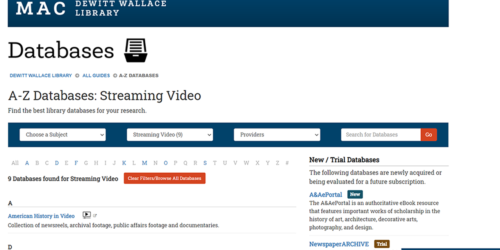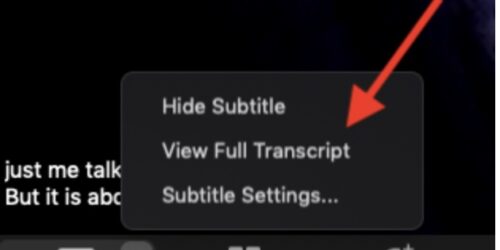Copyright & Digital Resources
Some of this content was written by Brooke Schmolke, Manager of the Digital Resource Center, and copied over from her website with her permission. Ginny Moran and Tamatha Perlman also provided significant input.
Finding images, sounds, music, and video to use in digital projects can be difficult. Below, you’ll find some resources to help with the process, including information on copyright, fair use, creative commons licensing, and Open Educational Resources, along with specific recommendations for sharing media remotely. This page also includes repositories of materials in the public domain or released with a creative commons license.
Keep in mind–all of this is focused on US copyright law. Copyright law varies from country to country, which can make things a bit more difficult to figure out. For an introduction to copyright, please see Macalester’s copyright resources on the library website.
The University of Minnesota’s Copyright Services page is also a very helpful resource.
Copyright
Copyright protects creators from unwanted usage of their works by granting them exclusive rights to duplicate and distribute copies of that work. Copyright law varies from country to country, which can make it an even more complex issue. Your best bet when using works another person has created are to ask for permission, be sure that you’re using the material under ‘Fair Use,’ or use a work that the author has already granted permissions to under Creative Commons or the public domain.
Fair Use
When using any sort of media that’s protected by copyright, it’s important to understand the legal issues surrounding this use and make sure that your use meets fair use criteria. There are four factors to fair use:
- the purpose and character of the use, including whether such use is of a commercial nature or is for nonprofit educational purposes;
- the nature of the copyrighted work;
- the amount and substantiality of the portion used in relation to the copyrighted work as a whole; and
- the effect of the use upon the potential market for or value of the copyrighted work.
Things like scholarship, research, commentary, criticism, news reporting, and parody are all considered under fair use. Because many of your projects will be viewed in classes, and may not end up on YouTube or other online services, you have a very strong case for fair use. If you’re planning to upload your video to YouTube, making sure that you use short clips and avoid using lengthy portions of copyright music will help to ensure that your video stays online.
Excerpt segments, and only choose what you really need. Ask yourself: do you need a particular work, or only part of it? Would another work that is more accessible be able to fill the role of the one you’d initially imagined?
The University of Minnesota’s Copyright Services page on Specific Uses: Teaching is a particularly helpful resource.
Creative Commons
Content creators sometimes define usage rights when they share their work, often using a licensing system called Creative Commons. Creative Commons is designed to allow creators to share their work using easy to understand licensing options. Many repositories allow you to limit your search to work that is in the Creative Commons.
The CreativeCommons.org website also lists a variety of Creative Commons repositories that have large amounts of Creative Commons work (the quickest way to get to this page from the Creative Commons page is to select the search bar at the very top of the page). Some of them can be a bit difficult to navigate (music repository Jamendo requires you to create an account and sign-in, for instance). Double-check any item that you download to be sure that it is licensed. Icons may say ‘Creative Commons’ or ‘CC’, or you might see a series of icons describing the license. Typically, these licenses are linked directly to a plain text version of the license, but not always.
Collect and organize the information to provide attribution for media that you and your students/colleagues create, too. Content you or your students/colleagues develop using materials licensed using Creative Commons shouldn’t be more restrictively licensed than the content you used. Visit the Creative Commons wiki page on best practices for attribution to learn more.
Open Educational Resources
Open Educational Resources (OER) are publicly and freely accessible materials and resources.
Macalester’s Open Educational Resources Toolkit: A selection of the support and resources available to the Macalester community through the library and through the OER community
The Public Domain
Public domain refers to the works for which rights have expired, which were released into the public domain by their creators. One notable source of public domain works is the United States government; works created by government employees are typically within the public domain. Not everything you find on a federal government website falls into this category (independent contractors often retain their copyright), but much does fall into the public domain.
Most older works are in the public domain–and photographs that are direct reproductions of those works are typically also considered to be public domain (though you may still see people requesting licensing fees). If the reproduction is artistic in nature and not simply a reproduction of the work, then it may be copyrighted.
In the case of written work, while originals may no longer be in copyright, translations or edited editions may.
How to know if something is in the public domain? Check out Stanford’s excellent guide.
Recommendations for Remote Media Sharing
- Thing about the what and why of including certain pieces of media.
- Consider showing brief excerpts over Zoom. Expect that there may be issues with lagging.
- Consider pausing a Zoom meeting and having participants watch media outside of the Zoom space. Participants can mute their microphones and stop their video, but keep their Zoom chat open to continue a synchronous conversation.
- Leverage content that is already available. Work with librarians and AIAs to explore existing resources and work to acquire rights.
- Participants may need to purchase access to some content, or download materials in advance to mitigate connection issues.
Repositories
Wikimedia Commons
A collection of freely usable media files (images, audio, videos).
Images
Images at Macalester College
A-Z list of library databases.
Europeana Collections
Once you search, use the filters on the top under “Can I use this?”
The Flickr Commons
A good place to start looking at Flickr; keep in mind, several government agencies post to Flickr regularly and DO mark their materials appropriately in terms of copyright.
Getty’s Open Content Images
Be sure that “open content” is checked in the upper left.
Library of Congress
Double-check image rights. Because it’s an online catalog and not a comprehensive repository, there will be a few holes in online image availability.
NASA
NASA content – images, audio, video, and computer files used in the rendition of 3-dimensional models, such as texture maps and polygon data in any format – generally are not copyrighted.
New York Public Library Digital Collections
When you click to enter keywords, a box will pop up allowing you to search only public domain materials.
The Noun Project
A repository of free icons available under Creative Commons licenses.
Pexels
Creative Commons works pulled from a few different locations; more stock imagery than Flickr.
Smithsonian Open Access
2D and 3D digital items from the Smithsonian collections
Art Museums
- Many museums and image resource, including the Minneapolis Institute of Arts and accessCeramics, provide rights information in their object metadata. Browse or search museum collections and click on individual objects to see information about their rights.
- Many images of the objects at the Walters Art Museum are available for download under Creative Commons licenses.
- Metropolitan Museum of Art Images
You can filter to show only open access artwork AFTER you search; you’ll also see a note below the image if it is in the public domain. - Yale Center for British Art
- Other museums, such as the Cleveland Museum of Art and National Gallery of Art, provide an Open Access filter. Many cultural heritage sites, such as Asia Art Archive and the Smithsonian, include Rights Statements and other helpful information about using their digitized collections.
Moving Images
Streaming Video at Macalester College
A-Z list of library databases.
New York Public Library Digital Collections Moving Image Collection
From this link, you can click the little box in the top left corner that says: “Show Only Public Domain.”
YouTube
Search and then hit the ‘Filter’ button in the upper left. From there, ‘”Creative Commons” is midway down the “Features” column. Keep in mind that YouTube may not be accessible to participants in China. YouTube videos can be embedded into Moodle, but are also impermanent and can be removed at the will of the video creator.
Audio
Creative Commons post on Legal Music for Remixing and Sampling.
Audionautix
Music created by Jason Shaw to be shared and reused under a Creative Commons attribution license.
BBC Sound Effects
16,000 BBC Sound Effects made available by the BBC in WAV format to download for use under the terms of the RemArc License.
Freesound.org
Freesound is a collaborative database of Creative Commons Licensed sounds.
Jamendo
Select the ‘Jamendo Music’ option when you get to the site (the hot pink one) to see Creative Commons licensed works.
New York Public Library Digital Collections Audio Collection
When you click to enter keywords, a box will pop up allowing you to From this link, you can click the little box in the top left corner that says: “Show Only Public Domain.”
Soundbible.org’s Royalty Free Sounds
Sounds available under Creative Commons and Public Domain.


